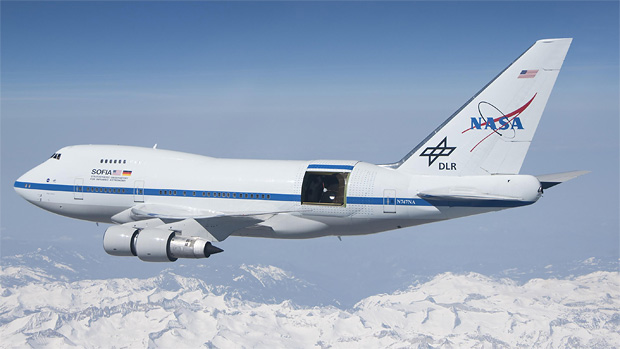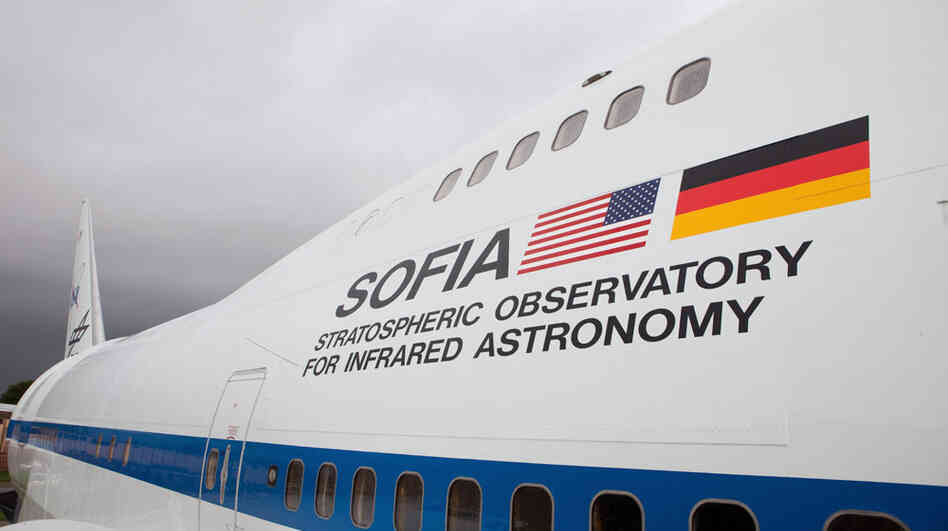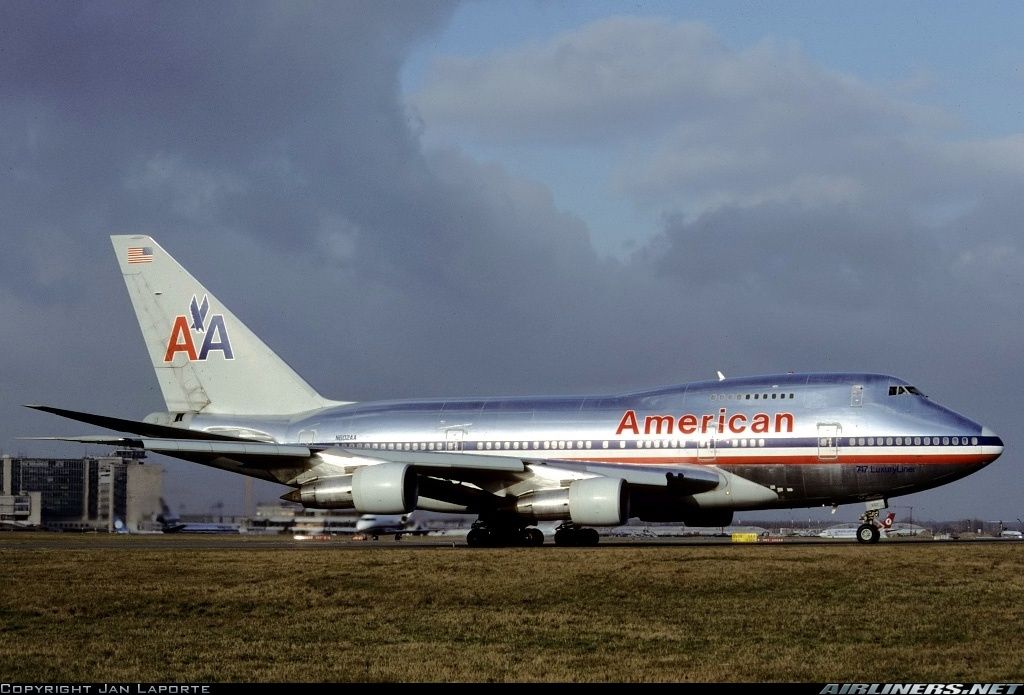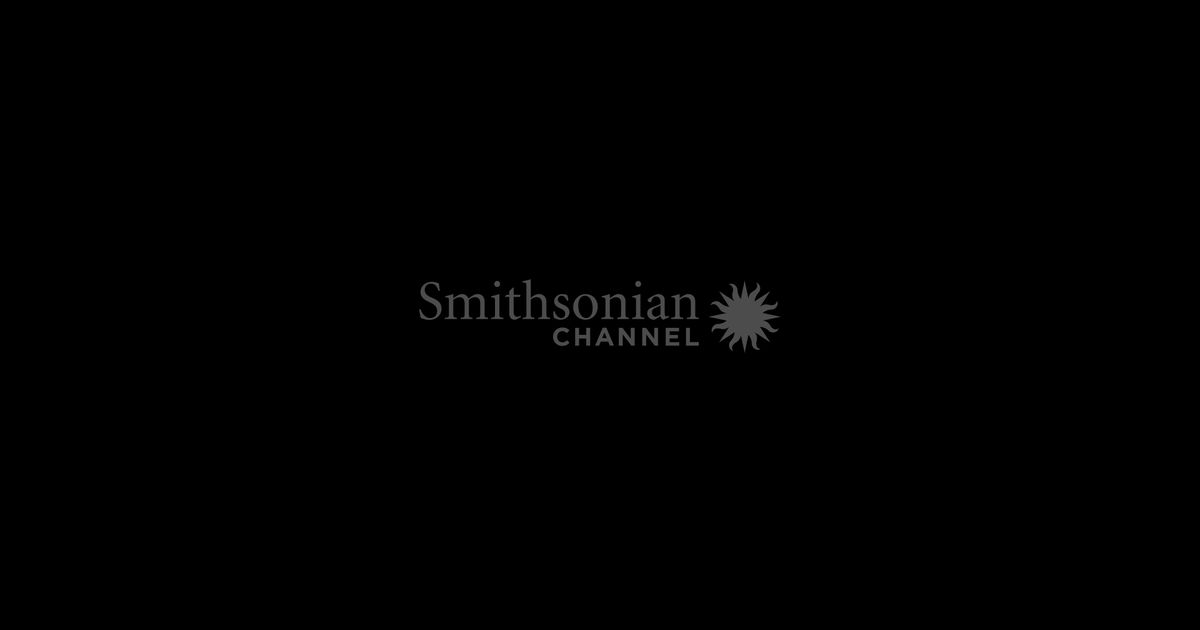So first, did you know that there were 45 747-SP ("Special Performance) planes built? They were put into service for ultra-long routes. It has a shorter fuselage (48' 4" shorter) and larger tail which let it fly further and faster than a standard 747 (45,000 lbs lighter than a 747-200).
It was developed at the request of PanAm and Iran Airways in the '70s to cover PanAm's New York -> Middle East route and Iran Airways Tehran -> New York route.
As of February 2013, 18 are still flying, 18 have been scrapped, and 9 are in storage, awaiting salvage or on display in museums.
747 vs 747 SP

Being 35,000 ft up puts it above 99% of the water vapor in the atmosphere and allows it to collect upward of 80% of the infrared light available to space based telescopes.
This is before they added a giant hole to it







It was developed at the request of PanAm and Iran Airways in the '70s to cover PanAm's New York -> Middle East route and Iran Airways Tehran -> New York route.
As of February 2013, 18 are still flying, 18 have been scrapped, and 9 are in storage, awaiting salvage or on display in museums.
747 vs 747 SP

NASA’s newest telescope is housed in a special jumbo jet that flies at 45,000 feet
The thick, soupy atmosphere of Earth is great for breathing, but not so much for seeing what’s going on in the cosmos. That’s why the most spectacular and scientifically important images of the universe have been taken by the Hubble Space Telescope. It has served the world well for more than 20 years, but Hubble is nearing the end of its useful life, and the James Webb telescope is still years away from completion. In the meantime, NASA and the German Aerospace Center (DLR) have just completed the Stratospheric Observatory for Infrared Astronomy (SOFIA) — a giant telescope that rides on the back of a high-altitude jumbo jet. It’s really the next best thing to being in space.
NASA has been working on the SOFIA project for a number of years, but only recently has the flying observatory been declared fully operational. Sadly, it’s not as simple as strapping a telescope to a standard jet and heading for the skies. The plane itself, a Boeing 747SP, is highly specialized. This craft was designed by Boeing to be able to fly higher, faster, and longer than a standard 747, which is perfect for SOFIA. The frame of the aircraft has been modified to be considerably lighter, but the most obvious change is the addition of a large door toward the aft where the 2.5-meter telescope peeks out.

The unique design of this aircraft allows it to remain in the stratosphere (at about 45,000 feet, 13,000 meters) for several hours making observations. At that altitude, most of the atmospheric distortion ground telescopes contend with is a non-issue, and it can fly to any part of the globe to observe different parts of the sky. One advantage SOFIA has over space-based telescopes is that it lands at the end of each mission, which makes it considerably easier to repair and outfit for particular tasks. A telescope like Hubble needs to be almost entirely automated and servicing it is a bit more involved.

SOFIA’s telescope works with nine interchangeable instruments that allow it to do astronomy in the infrared and visible spectrum. However, only one instrument can be attached at a time. That’s not a huge problem as NASA plans more than 100 flights per year. The telescope also has a system of gyroscopes and pressurized oil bearings to cope with vibration from turbulence and the engines. Using these packages, SOFIA is capable of investigating many of the same things as space telescopes including exoplanet study, comet composition, and stellar evolution. The newly completed GREAT spectrometer will be perfect for peering deep into distant planetary nebulae.
While operating SOFIA is cheap compared to launching a space telescope, the yearly costs are still more than $80 million. NASA has worried publicly that unless the DLR contributes more funding to the program, it might have to be grounded in a few years. The space agency is working to convince Congress to authorize additional funding in 2015 for the SOFIA program. Until it knows for sure, NASA will continue flying SOFIA missions and studying the universe at 600 miles per hour.
The thick, soupy atmosphere of Earth is great for breathing, but not so much for seeing what’s going on in the cosmos. That’s why the most spectacular and scientifically important images of the universe have been taken by the Hubble Space Telescope. It has served the world well for more than 20 years, but Hubble is nearing the end of its useful life, and the James Webb telescope is still years away from completion. In the meantime, NASA and the German Aerospace Center (DLR) have just completed the Stratospheric Observatory for Infrared Astronomy (SOFIA) — a giant telescope that rides on the back of a high-altitude jumbo jet. It’s really the next best thing to being in space.
NASA has been working on the SOFIA project for a number of years, but only recently has the flying observatory been declared fully operational. Sadly, it’s not as simple as strapping a telescope to a standard jet and heading for the skies. The plane itself, a Boeing 747SP, is highly specialized. This craft was designed by Boeing to be able to fly higher, faster, and longer than a standard 747, which is perfect for SOFIA. The frame of the aircraft has been modified to be considerably lighter, but the most obvious change is the addition of a large door toward the aft where the 2.5-meter telescope peeks out.

The unique design of this aircraft allows it to remain in the stratosphere (at about 45,000 feet, 13,000 meters) for several hours making observations. At that altitude, most of the atmospheric distortion ground telescopes contend with is a non-issue, and it can fly to any part of the globe to observe different parts of the sky. One advantage SOFIA has over space-based telescopes is that it lands at the end of each mission, which makes it considerably easier to repair and outfit for particular tasks. A telescope like Hubble needs to be almost entirely automated and servicing it is a bit more involved.

SOFIA’s telescope works with nine interchangeable instruments that allow it to do astronomy in the infrared and visible spectrum. However, only one instrument can be attached at a time. That’s not a huge problem as NASA plans more than 100 flights per year. The telescope also has a system of gyroscopes and pressurized oil bearings to cope with vibration from turbulence and the engines. Using these packages, SOFIA is capable of investigating many of the same things as space telescopes including exoplanet study, comet composition, and stellar evolution. The newly completed GREAT spectrometer will be perfect for peering deep into distant planetary nebulae.
While operating SOFIA is cheap compared to launching a space telescope, the yearly costs are still more than $80 million. NASA has worried publicly that unless the DLR contributes more funding to the program, it might have to be grounded in a few years. The space agency is working to convince Congress to authorize additional funding in 2015 for the SOFIA program. Until it knows for sure, NASA will continue flying SOFIA missions and studying the universe at 600 miles per hour.
Being 35,000 ft up puts it above 99% of the water vapor in the atmosphere and allows it to collect upward of 80% of the infrared light available to space based telescopes.
This is before they added a giant hole to it












Comment